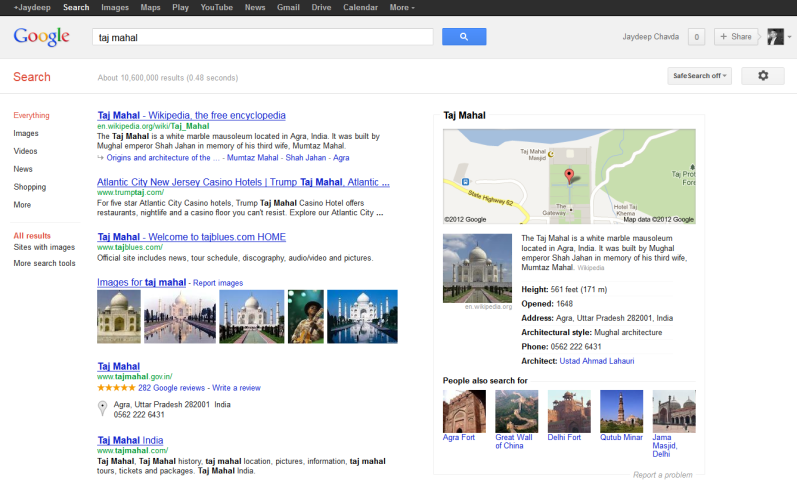Tags
find google, google, Google Knowledge Graph, Google Search, graph results, intelligent search, knowledge graph, search google, Search Revolution, Trading
Google Knowledge Graph: Things, not Strings
Google has just launched Knowledge Graph, the latest refinement to its search engine product that seeks to provide users with more relevant and in-depth responses to search queries.
Google’s goal is to get you to the information you’re looking for in fewer clicks.Knowledge Graph results seek to remove the ambiguity from typical search results by presenting different segments of results with one click — so if you’re looking for Taj Mahal, the musician (and not the landmark), you can just click over instantly to tell Google which segment of search results you’re looking for.
The Google Search of the future is here. Now. Today. The long-talked-about semantic web — Google prefers “Knowledge Graph” — is rolling out across all Google Search tools, and our most fundamental online task may never be the same again.
To build this world of things, Google is tapping a variety of knowledge databases, including Freebase, which it bought in 2010, Wikipedia, Google Local, Google Maps and Google Shopping. Currently, Google’s Knowledge Graph has over 500 million people, places and things and those things have at least 3.5 billion attributes.
Lastly, Knowledge Graph seeks to present information that users commonly look for after making a search, letting users easily drill down into a subject to find deeper information.
Google’s Knowledge Graph will roll out across the U.S. (and on all Google platforms: desktop, mobile, tablet) in the coming days. Eventually, it will go global. Give it a try.
The Knowledge Graph enhances Google Search in three main ways to start:
1. Find the right thing
Language can be ambiguous—do you mean Taj Mahal the monument, or Taj Mahal the musician? Now Google understands the difference, and can narrow your search results just to the one you mean—just click on one of the links to see that particular slice of results.
2. Get the best summary
With the Knowledge Graph, Google can better understand your query, so we can summarize relevant content around that topic, including key facts you’re likely to need for that particular thing.
3. Go deeper and broader
Finally, the part that’s the most fun of all—the Knowledge Graph can help you make some unexpected discoveries. You might learn a new fact or new connection that prompts a whole new line of inquiry.
– Geeky Note by Jaydeep Chavda

